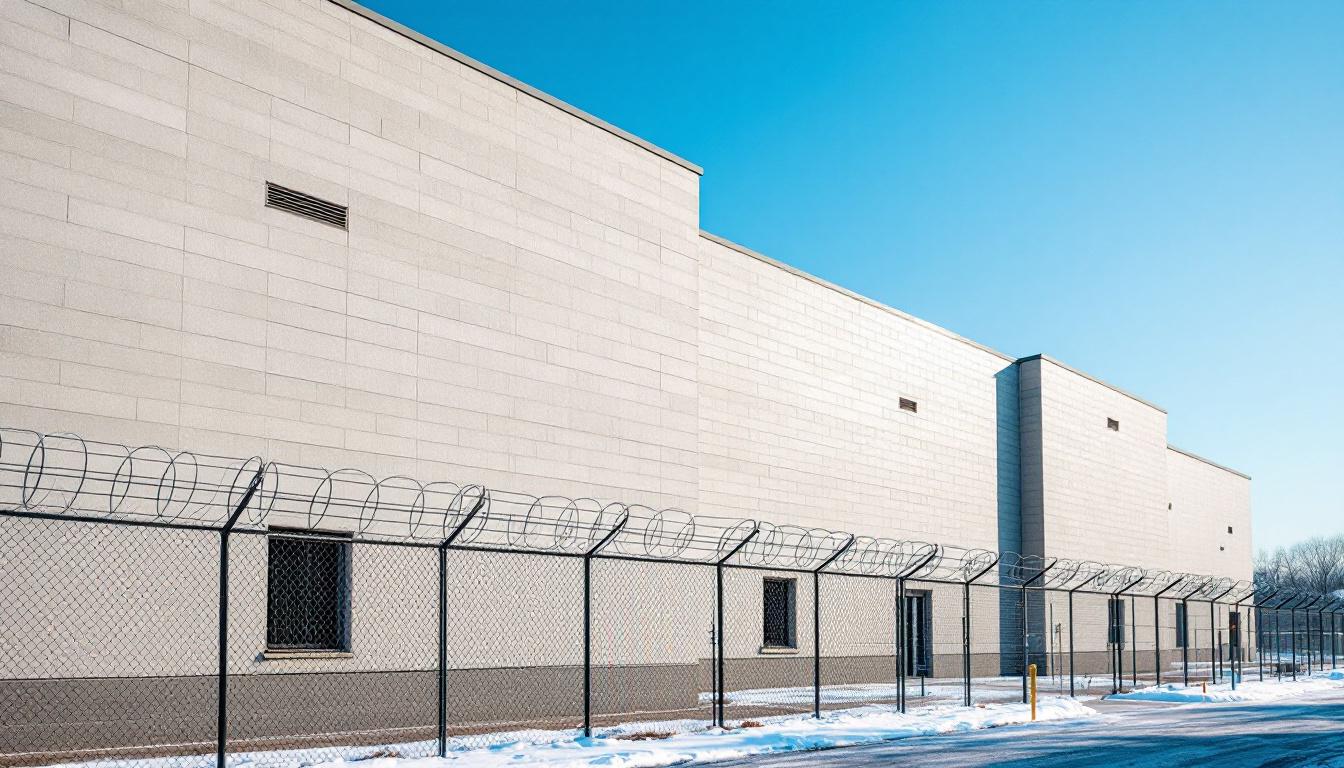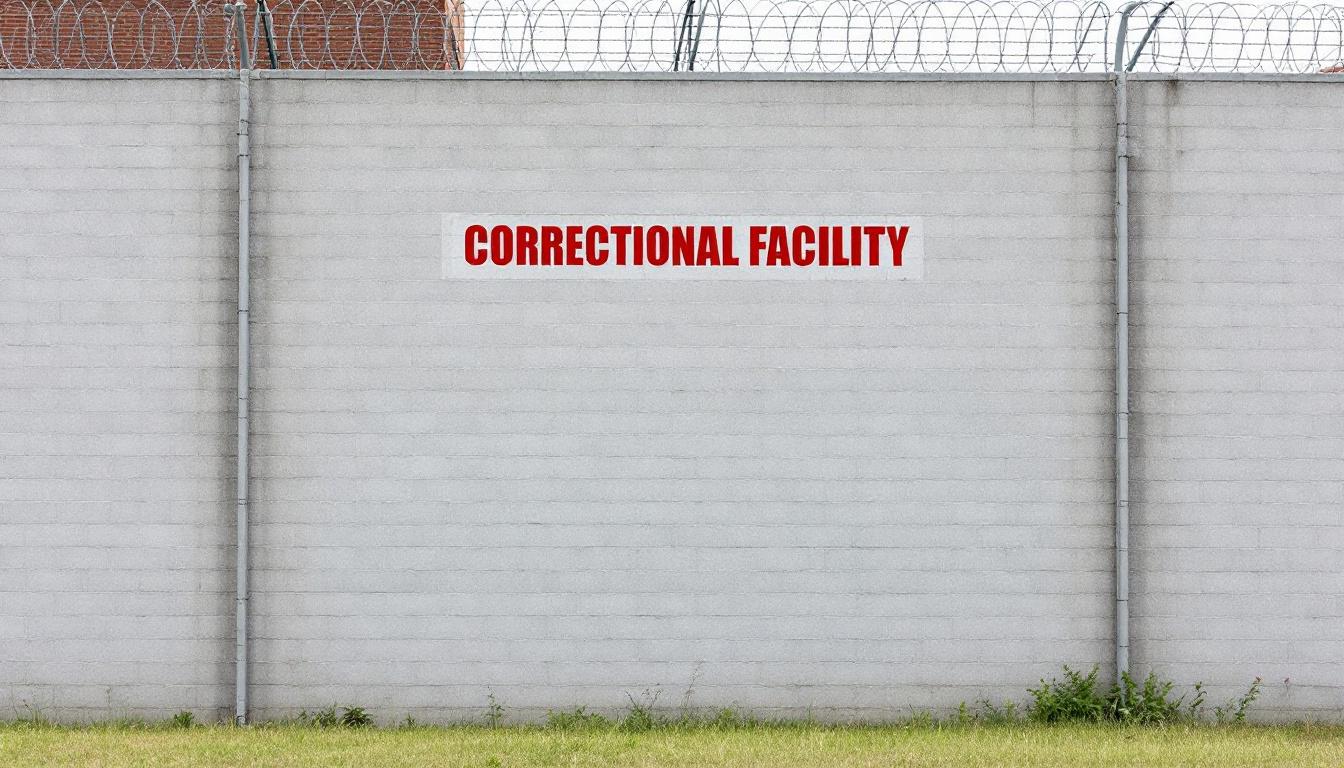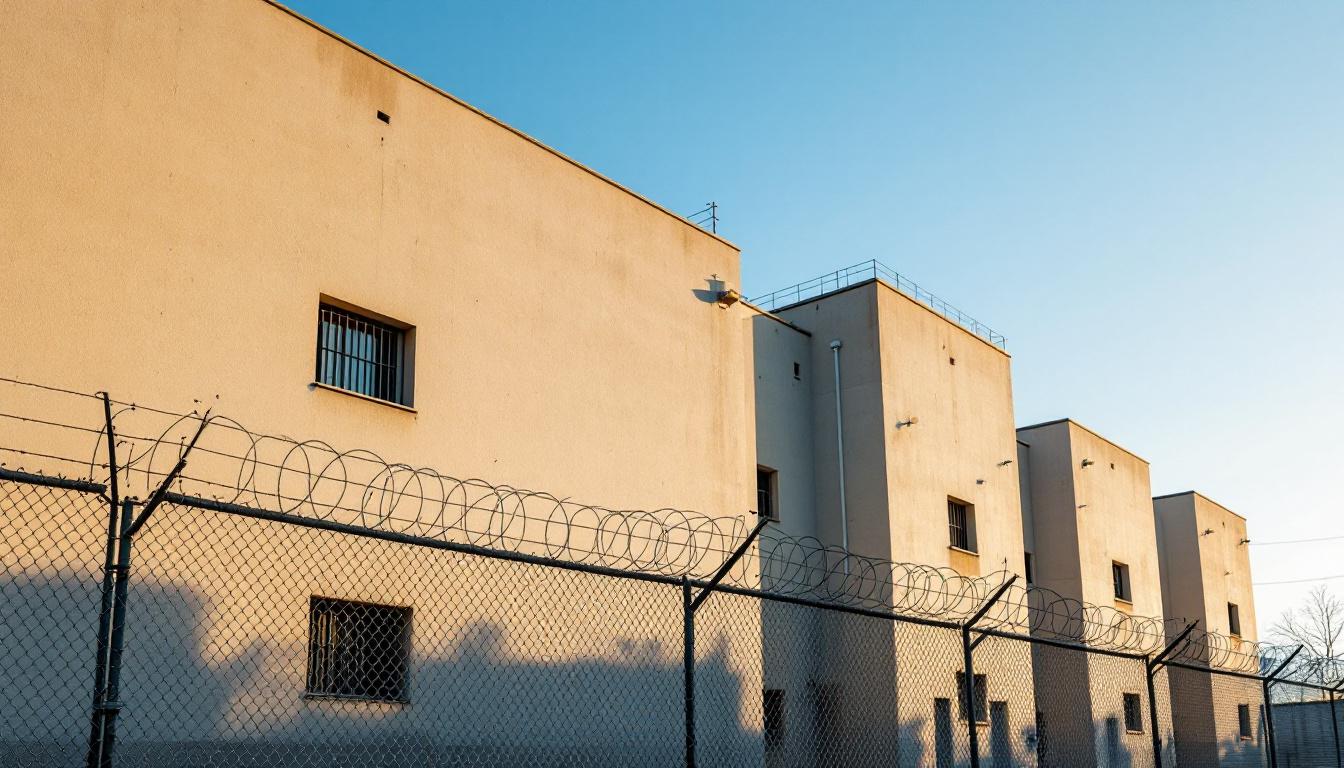
Quick Navigation
How to contact an inmate at Short Term Offender Program
This comprehensive guide will walk you through how to connect with an inmate at Short Term Offender Program. Follow the steps below to find an inmate and send letters and photos:
- Search for the inmate using our search tool below
- Create your account or log in to Penmate
- Write your message (up to 6,000 characters)
- Send instantly - inmates receive printed copies daily
Find an Inmate
Search for an inmate to start communicating today
Tip: You can search by first name, last name, or inmate ID number
To contact a person at Short Term Offender Program start by searching for the person on the official facility website. Perform a search by following these steps:
- Step 1: Enter their first name and last name into the search form and click "Search"
- Step 2: Locate their inmate record
- Step 3: Write down their Inmate ID and any housing information provided
Important! Be sure to enter the person's full name. Nicknames should not be used.
How to Send Messages to Inmates

You can use your phone or computer to send emails, letters, and photos to an inmate. Messages are sent electronically to inmate tablets or kiosks at the facility. If you would like to send a message, start by searching for an inmate at Short Term Offender Program.
Sending Photos and Postcards

A great way to send love and support to a loved one at Short Term Offender Program is to send photos and postcards. It only takes a few minutes to send photos from your phone and it makes a huge difference. You can also mail postcards with words of support and inspiration, or design your own postcard for special moments like birthdays and holidays.
Important! Be sure not to send any explicit photos or they may not be approved by the facility. You can also use a photo printing app like Penmate to make sure your photos are printed at the correct size (4x6 or 3x5) and are mailed according to the rules and regulations of Short Term Offender Program.
Frequently asked questions about Short Term Offender Program
-
How long does it take to deliver a message?
If you're sending an email message your letter is usually delivered within 24-48 hours. For messages sent via mail you should expect delivery within 3-7 days. All messages will need be approved by Short Term Offender Program.
-
How much does it cost to send a message to Short Term Offender Program?
You can send a message free using your phone or mail a message via USPS for the price of a $0.60 stamp and envelope. You can also purchase credits or e-stamps from services starting at $1.99.
-
What services can I use to contact an inmate at Short Term Offender Program?
Penmate
You can use Penmate to send letters and photos to an inmate from your phone. It's an easy way to stay in touch during your loved one's incarceration. Use the inmate locator to find an inmate's location and contact information, then you can send messages within a few minutes.
Securus messaging
Securus may be another option for communicating with an inmate at Short Term Offender Program. You can create a friends and family account and purchase credits to send messages. All messages will be reviewed and must be approved by the facility.
JPay
Some county jails and state prisons may support sending messages with JPay. You must register an account with the system, find your loved one, and purchase stamps to send messages. For some locations you can also attach photos.
Smart Jail Mail
You may also check if Smart Jail Mail is available at Short Term Offender Program. Smart Jail Mail is operated by Smart Communications and has contracted with some state and county jails. After purchasing credits, your messages and photos are sent to the facility, printed out, and then handed out to your loved one.
-
What is the mailing address of Short Term Offender Program?
Mailing address:
Short Term Offender Program
501 W Main St
Plainfield, IN 46168
Phone: (317) 839-7751Business hours:
- Monday: Closed
- Tuesday: 8:00 AM – 2:30 PM
- Wednesday: 8:00 AM – 2:30 PM
- Thursday: Closed
- Friday: 8:00 AM – 2:30 PM
- Saturday: 8:00 AM – 2:30 PM
- Sunday: 8:00 AM – 2:30 PM
-
What are the visiting hours at Short Term Offender Program?
Visiting hours at Short Term Offender Program vary by housing unit and security level. Generally, visits are scheduled on weekends and holidays, with some facilities offering weekday visits. Contact the facility directly at (317) 839-7751 or check their website for the current visiting schedule. Visits typically last 30-60 minutes and must be scheduled in advance.
-
What items are prohibited when sending mail to Short Term Offender Program?
Prohibited items typically include: cash, personal checks, stamps, stickers, glitter, glue, tape, staples, paperclips, polaroid photos, musical or blank greeting cards, hardcover books, magazines with staples, and any items containing metal or electronics. Only send letters on plain white paper with blue or black ink. Photos must be printed on regular photo paper (no Polaroids). Always check with Short Term Offender Program for their specific mail policies.
-
How do I send money to an inmate at Short Term Offender Program?
You can send money to an inmate at Short Term Offender Program through several methods: 1) Online using JPay, Access Corrections, or the facility's approved vendor, 2) Money orders mailed directly to the facility with the inmate's name and ID number, 3) Kiosks located in the facility lobby, or 4) Over the phone using a credit or debit card. Fees vary by method, typically ranging from $2.95 to $11.95 per transaction.
-
Can I schedule a video visit with an inmate at Short Term Offender Program?
Many facilities now offer video visitation as an alternative to in-person visits. At Short Term Offender Program, video visits may be available through services like Penmate, Securus Video Connect, GTL, or ICSolutions. Video visits typically cost $10-20 for 20-30 minutes and must be scheduled in advance. You'll need a computer or smartphone with a camera and reliable internet connection. Contact the facility for their specific video visitation policies and approved vendors.
-
What identification do I need to visit an inmate at Short Term Offender Program?
All visitors must present valid government-issued photo identification such as a driver's license, state ID, passport, or military ID. Minors must be accompanied by a parent or legal guardian who can provide the minor's birth certificate. Some facilities require visitors to be on the inmate's approved visitation list, which may require a background check. Contact Short Term Offender Program for specific ID requirements and visitor approval procedures.
-
How can I find out an inmate's release date?
To find an inmate's release date at Short Term Offender Program, you can: 1) Use the online inmate search tool if available, 2) Call the facility's records department, 3) Contact the inmate's case manager or counselor, or 4) Have the inmate provide this information during a call or visit. For privacy reasons, some facilities only release this information to immediate family members.
Facility Overview
Contact Information
Short Term Offender Program501 W Main St
Plainfield, IN 46168
Phone: (317) 839-7751
Official Website

About Short Term Offender Program
Serving the Plainfield community and surrounding areas of Indiana, Heritage Trail Correctional Facility plays a vital role in supporting offenders during their final year of incarceration through specialized programming and reentry preparation. Located in Plainfield, Indiana, this facility operates under the management of The GEO Group, Inc. in partnership with the Indiana Department of Correction, focusing specifically on individuals with 365 days or less remaining on their sentences through the Short Term Offender Program (STOP).
The facility maintains a comprehensive approach to rehabilitation through evidence-based programming derived from two of the Indiana Department of Correction’s most successful initiatives. Heritage Trail offers Purposeful Living Units Serve, a faith and character program, alongside Thinking for a Change, a cognitive behavioral program that forms the core curriculum. The facility’s holistic programming encompasses addiction recovery services, family and social support systems, civic engagement opportunities, cognitive and behavioral change initiatives, and education and employment preparation. Faith and character-based programming is integrated throughout daily activities, providing inmates with structured support as they prepare for community reentry.
Heritage Trail Correctional Facility operates from a campus that includes an administration building, chapel, dedicated program spaces, vocational building, services building, and twelve housing cottages, accommodating up to many individuals. The facility has achieved accreditation through the American Correctional Association, with reaccreditation completed in 2024, demonstrating its commitment to maintaining professional standards in correctional operations and programming delivery.
Programs & Services
Heritage Trail Correctional Facility centers its rehabilitation approach around evidence-based programming designed specifically for offenders with shorter sentences. The facility’s core curriculum draws from two proven programs: Purposeful Living Units Serve, which focuses on faith and character development, and Thinking for a Change, a cognitive behavioral intervention program. These foundational programs are complemented by comprehensive addiction recovery services, family and social support initiatives, and civic engagement opportunities that prepare inmates for successful community reintegration.
The facility’s educational and vocational programming typically includes basic literacy courses, GED preparation, and job readiness training delivered through its dedicated vocational building. Inmates may have access to life skills workshops, computer literacy courses, and pre-release planning services that address housing, employment, and community resources. The facility often provides counseling services including individual and group therapy sessions, substance abuse treatment programs, and mental health support services designed to address the underlying factors contributing to criminal behavior.
Faith and character-based programming is integrated throughout daily operations, with the facility’s chapel serving as a central hub for spiritual services and character development activities. Support services may include family reunification programs, visitation coordination, and community volunteer partnerships that help maintain positive social connections. The facility’s holistic approach often encompasses physical wellness programs, recreational activities, and peer mentoring opportunities that support behavioral change and personal growth during the crucial period before release.
Daily Life & Visitation

Residents at Heritage Trail Correctional Facility begin each day immersed in evidence-based programming designed to facilitate positive behavioral change during their final year of incarceration. The facility’s core curriculum centers around two proven programs - Purposeful Living Units Serve, which integrates faith and character development, and Thinking for a Change, a cognitive behavioral intervention. These structured activities typically commence in the morning hours and continue throughout the day, with faith-based elements woven into routine activities across the facility’s twelve housing cottages.
The comprehensive programming approach at Heritage Trail encompasses addiction recovery services, family and social support initiatives, civic engagement opportunities, and education and employment preparation. Residents may participate in vocational training within the dedicated vocational building, attend sessions in the programs space, or gather for services in the on-site chapel. The facility’s holistic model often includes structured meal times, work assignments, educational classes, and therapeutic programming, all designed to prepare individuals for successful reintegration into their communities within 365 days or less.
Family connections remain an important component of the rehabilitation process, though specific visitation policies and communication procedures would typically be coordinated through the Indiana Department of Correction guidelines. The facility’s administration building likely houses visitor processing areas, while the services building may contain resources for maintaining family relationships and community ties. With its American Correctional Association accreditation, Heritage Trail maintains professional standards in all aspects of daily operations, from housing management across its cottage-style accommodations to the delivery of individualized programming for both general population and established Time Offender Program participants.
Ready to Connect?
Start communicating with your loved one today
Search for an Inmate









